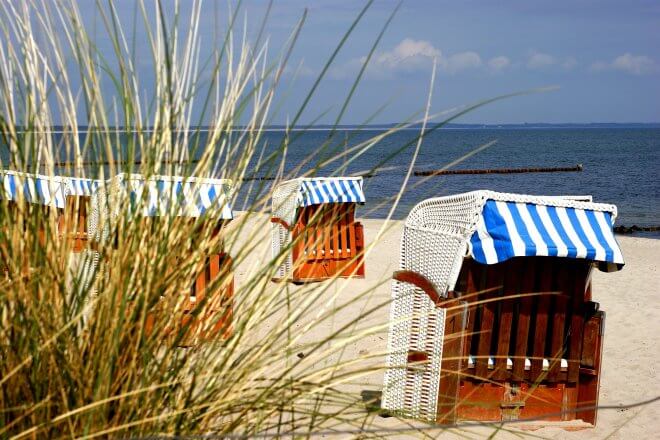Alternative Travel Index Rank: #9
Germany also ranks 8th in the Top 10 Cultural Travel Destinations
Excels in health & hygiene and World Heritage cultural sites
Population and tourists density at peak season: 234 (high)
Germany, the largest country in Central Europe, is a federation of 16 states, roughly corresponding to regions with their own distinct and unique cultures. It is one of the most influential European nations culturally and one of the world’s main economic powers.
Known around the world for its precision engineering and high-tech products, it is equally admired by visitors for its old-world charm and “Gemütlichkeit” (coziness). If you have perceptions of Germany as simply homogeneous, it will surprise you with its many historical regions and local diversity.
Travel Costs
Germany ranks #126/141 for price competitiveness in Justraveling’s Alternative Travel Index. Average travel costs per day: $67 (backpacker) – $223 (mid-range). Cheapest German cities: Hanover, Dresden, Pforzheim, Aachen, Berlin. Most expensive German cities: Mannheim, Munich, Hamburg, Heidelberg, Cologne.
Best Time to Go
Apr-Jun and Sep-Oct are the best time to go to Germany, to benefit from smaller crowds, lower prices, and relatively warm weather. Theatre and opera fans should prefer Nov-Mar, when the season takes place.
Places to Visit
Berlin, the reunified and re-invigorated capital of Germany, today is a metropolis of diversity with elegant clubs, shops, galleries and restaurants. Besides, it’s considered by many the “post-tourist” capital of Europe.
Harz National Park is a nature reserve in the federal states of Lower Saxony and Saxony-Anhalt, covered with forests, mainly with spruce and beech woods. The park is part of the Natura 2000 Network of the European Union.
Once called “Florence on the Elbe”, Dresden is an industrial, governmental, and cultural centre, world-renowned for the Bruehl’s Terrace and its historic landmarks. The city’s Old Town (Altstadt) was destroyed during World War II.
Besides beaches and sea spas, The Baltic Sea Coast is famous for its different types of coastline and the diverse nature. The National Park Jasmund on Rügen is a World Heritage natural site, whereas the historic cities of the Hanseatic towns Stralsund and Wismar are classified as World Heritage cultural site.
Heidelberg is truly a culturally diverse and international destination, despite its small size. Over the years, it has attracted many artists and intellectuals from all over Europe, being considered Germany’s unofficial intellectual capital.
Travel Ideas and Things to Do
Follow the example of the young Hermann in Heimat II, and take a train trip through Germany with Deutsche Bahn. You can choose from various routes, but be sure not to miss Munich, with its eclectic mix of tradition and modernity.
The Goldsteig Trail is the longest and most diverse hiking path in Germany. It runs along the Upper Palatinate and Bavarian Forest and offers 660 km of hiking terrain with great sceneries and cultural sightseeing.
The Heidschnuckenweg is a 223 km long certified quality hiking trail which leads in a north-south direction through the beautiful countryside of Lüneburg Heath from Hamburg to Celle in Northern Germany. It consists of 13 stages.
More active travel ideas for your next trip can be found in the Hiking Series. Check out these five routes to enjoy an awesome day hike in Germany.
Keen on some real urban exploration? Browse our favorite trails in Berlin.
This Travel Guide is a work in progress. Improve it with a German touch!
- Browse All European Destinations
- World’s Best Alternative Travel Destinations
- Trip Planning: Inspiration, Budget, Flights, Accommodations, Tools
Sources: some text excerpts from Wikitravel & Wikipedia; travel cost data from Numbeo.




